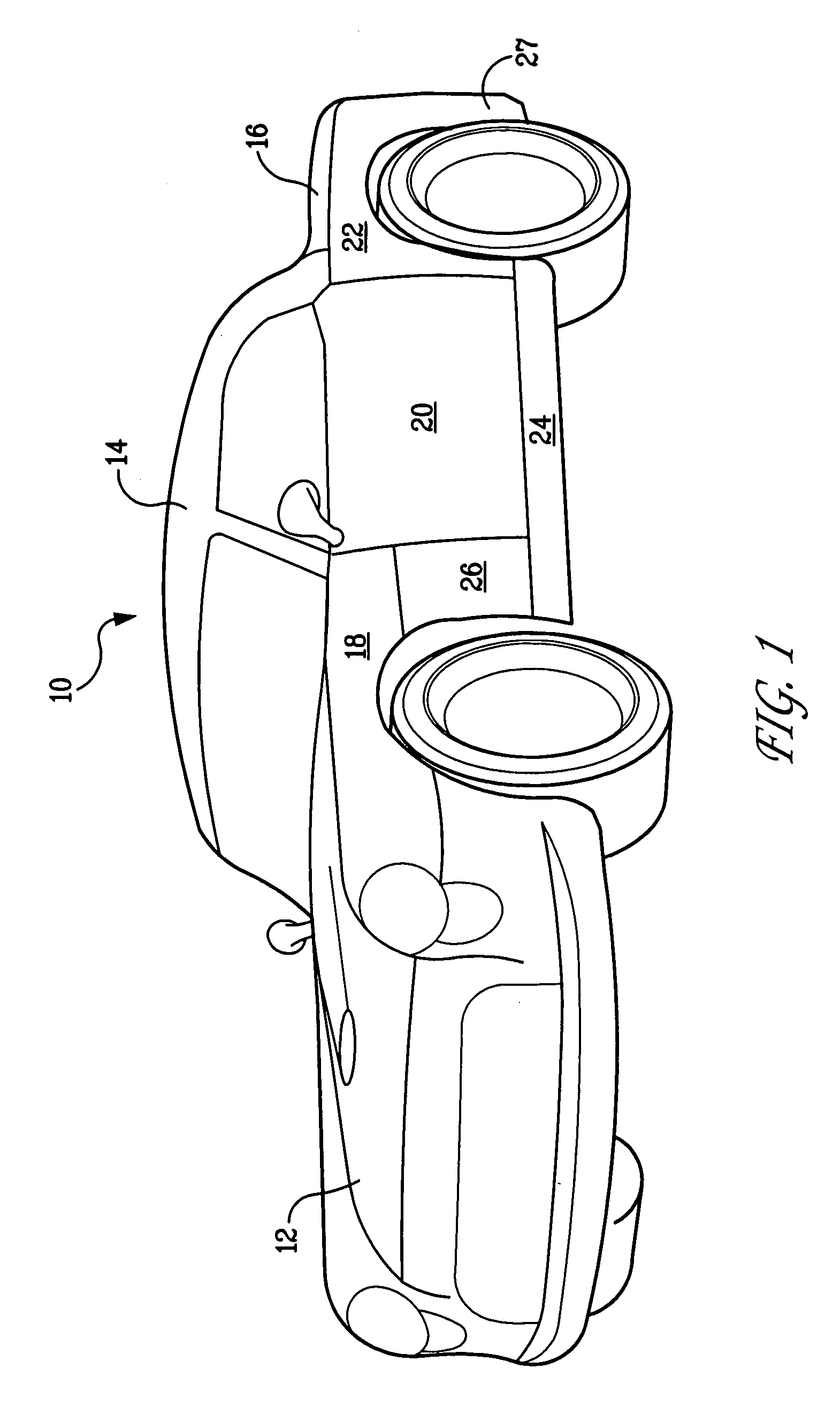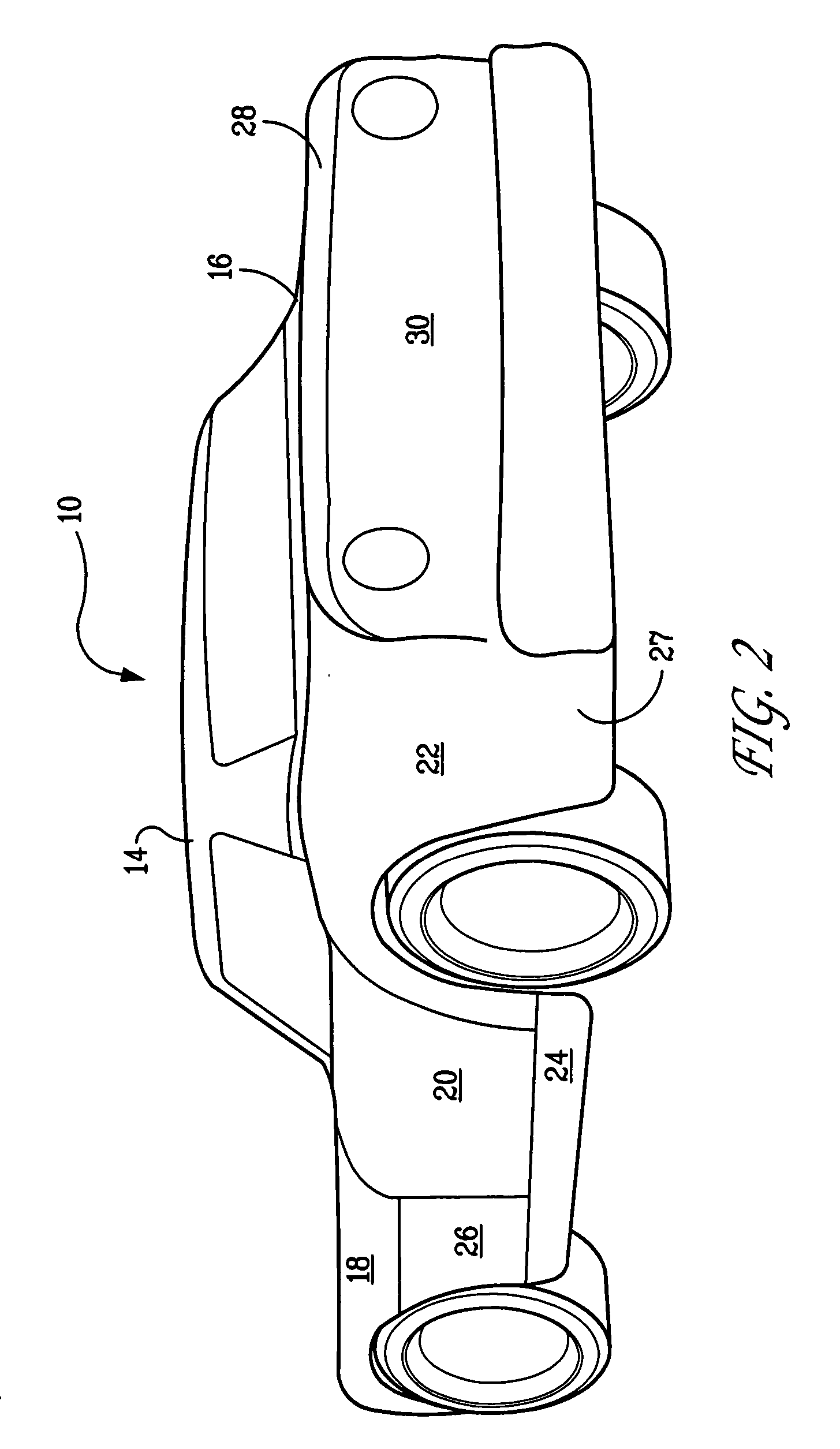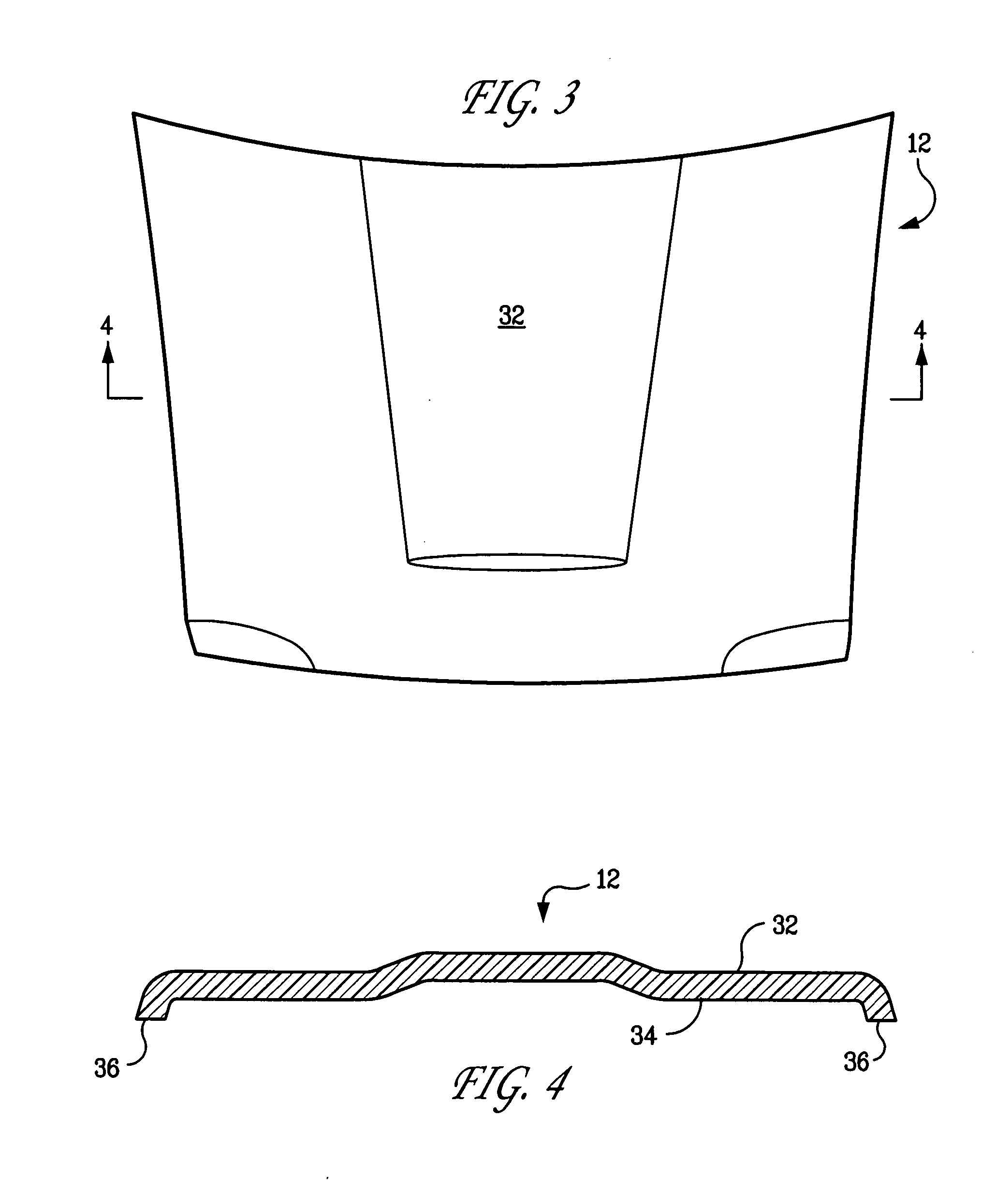Paint system and method of painting fiber reinforced polypropylene composite components
- Summary
- Abstract
- Description
- Claims
- Application Information
AI Technical Summary
Benefits of technology
Problems solved by technology
Method used
Image
Examples
examples
[0095] PP3505G is a propylene homopolymer commercially available from ExxonMobil Chemical Company of Baytown, Tex. The MFR (2.16 kg, 230° C.) of PP3505G was measured according to ASTM D1238 to be 400 g / 10 min.
[0096] PP7805 is an 80 MFR propylene impact copolymer commercially available from ExxonMobil Chemical Company of Baytown, Tex.
[0097] PP8114 is a 22 MFR propylene impact copolymer containing ethylene-propylene rubber and a plastomer, and is commercially available from ExxonMobil Chemical Company of Baytown, Tex.
[0098] PP8224 is a 25 MFR propylene impact copolymer containing ethylene-propylene rubber and a plastomer, and is commercially available from ExxonMobil Chemical Company of Baytown, Tex.
[0099] PO1020 is 430 MFR maleic anhydride functionalized polypropylene homopolymer containing 0.5-1.0 weight percent maleic anhydride.
[0100] Cimpact CB7 is a surface modified talc, V3837 is a high aspect ratio talc, and Jetfine 700 C is a high surface area talc, all available from Luz...
example 30
Illustrative Example 30
[0117] An extruder with the same size and screw design as Examples 27-29 was used. All zones of the extruder were initially heated to 180° C. PP 3505 dry mixed with Jetfine 700 C and PO 1020 was then fed at 50 pounds per hour using a gravimetric feeder into the extruder hopper located approximately two diameters from the beginning of the extruder screws. Polyester fiber with a denier of 7.1 and a thickness of 3100 filaments was fed through the same hopper. The screw speed of the extruder was then set to 596 revolutions per minute, resulting in a feed rate of 12.1 pounds of fiber per hour. After a uniform extrudate was attained, all temperature zones were lowered to 120° C., and the extrudate was pelletized after steady state temperatures were reached. The final composition of the blend was 48% PP 3505, 29.1% Jetfine 700 C, 8.6% PO 1020 and 14.3% polyester fiber.
[0118] The polypropylene composite resin produced while all temperature zones of the extruder were ...
PUM
| Property | Measurement | Unit |
|---|---|---|
| Temperature | aaaaa | aaaaa |
| Temperature | aaaaa | aaaaa |
| Height | aaaaa | aaaaa |
Abstract
Description
Claims
Application Information
 Login to View More
Login to View More - R&D
- Intellectual Property
- Life Sciences
- Materials
- Tech Scout
- Unparalleled Data Quality
- Higher Quality Content
- 60% Fewer Hallucinations
Browse by: Latest US Patents, China's latest patents, Technical Efficacy Thesaurus, Application Domain, Technology Topic, Popular Technical Reports.
© 2025 PatSnap. All rights reserved.Legal|Privacy policy|Modern Slavery Act Transparency Statement|Sitemap|About US| Contact US: help@patsnap.com



